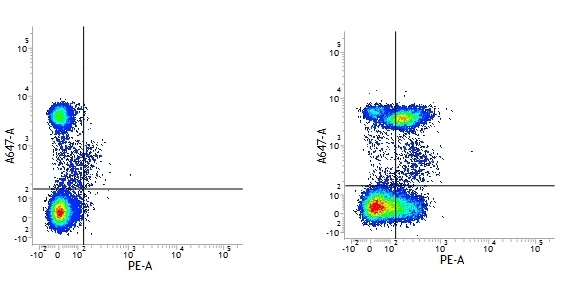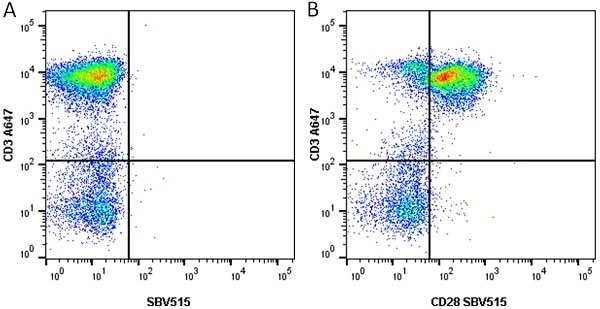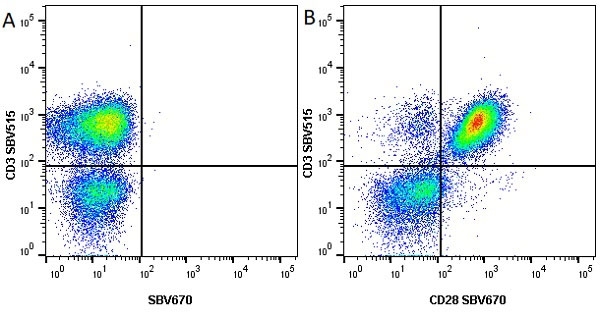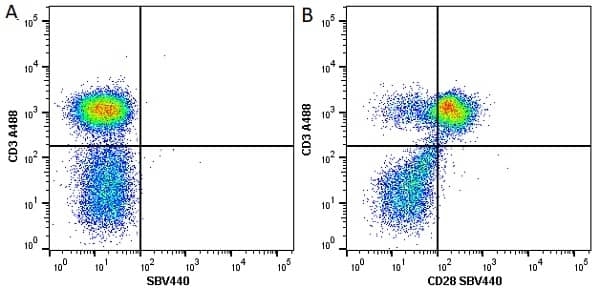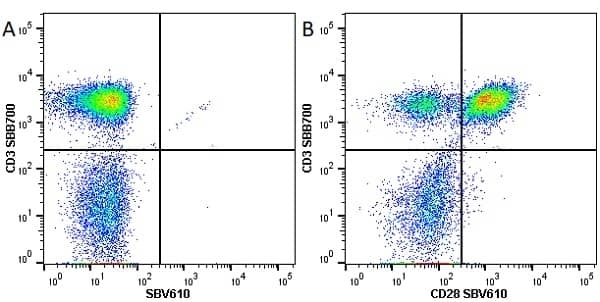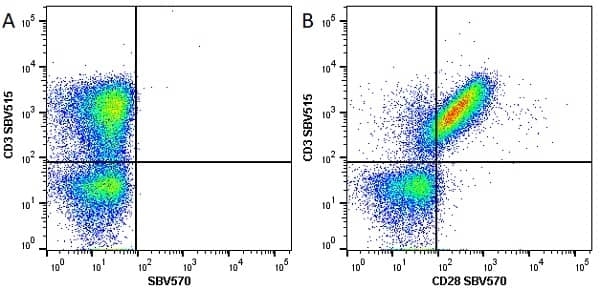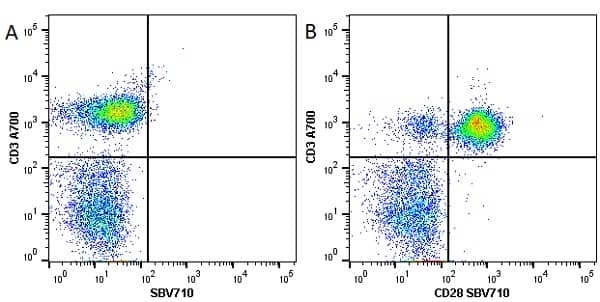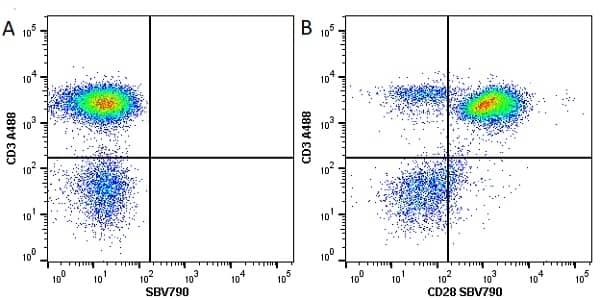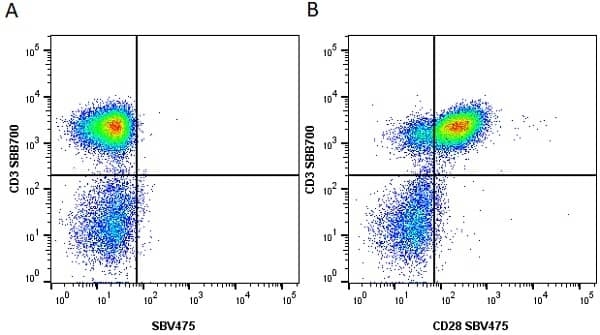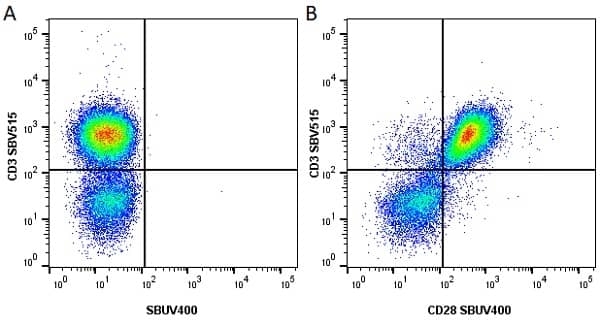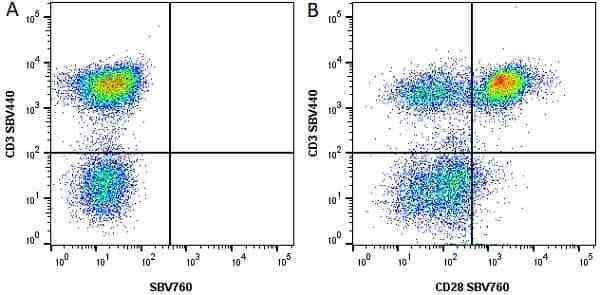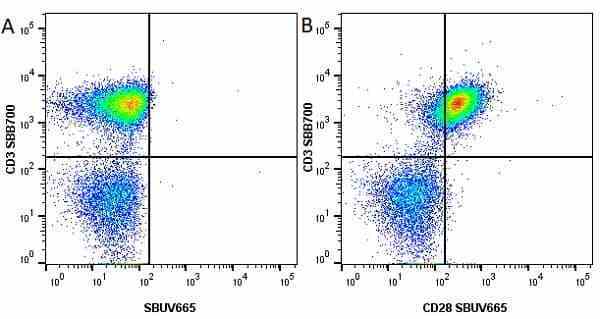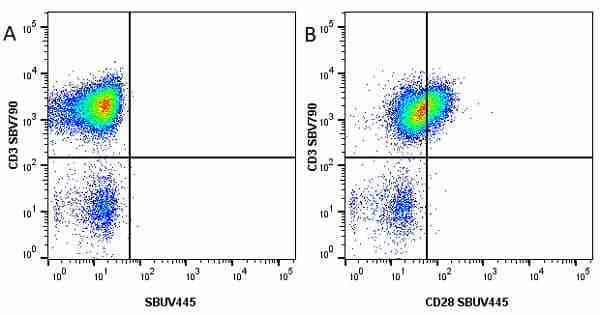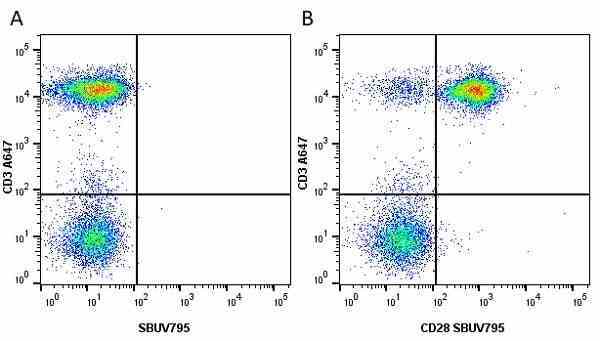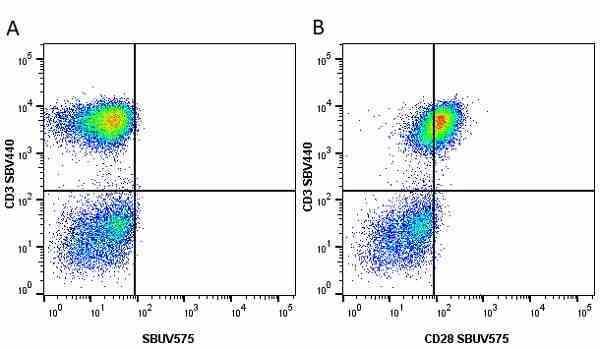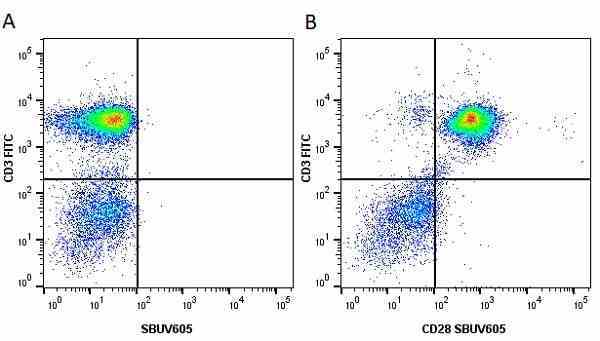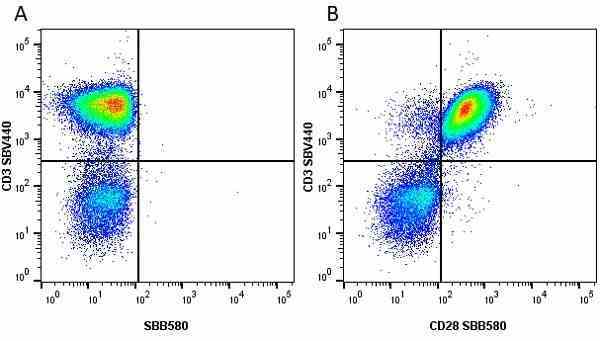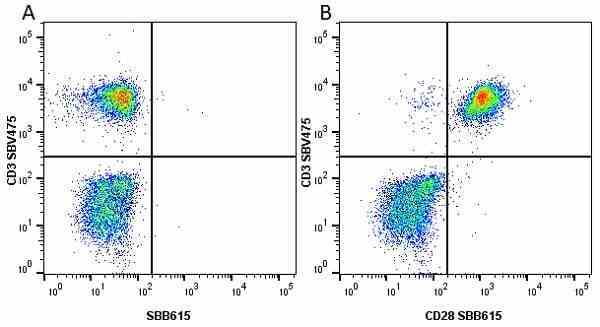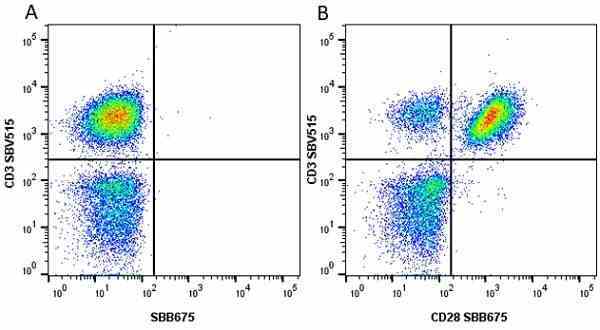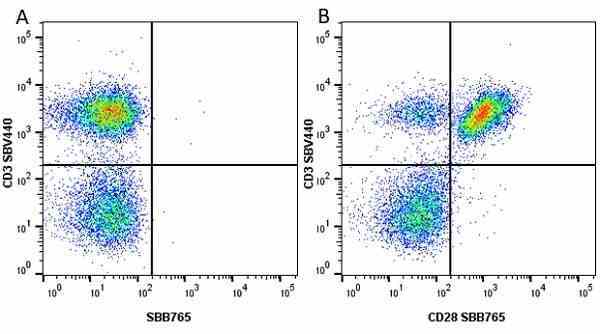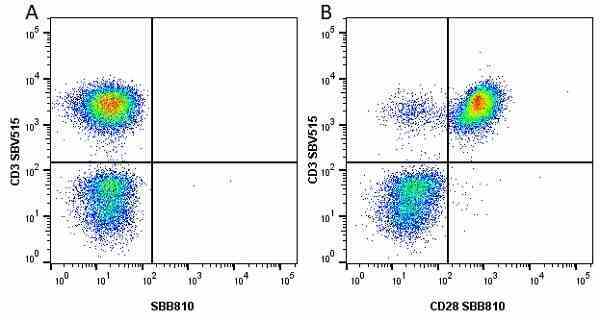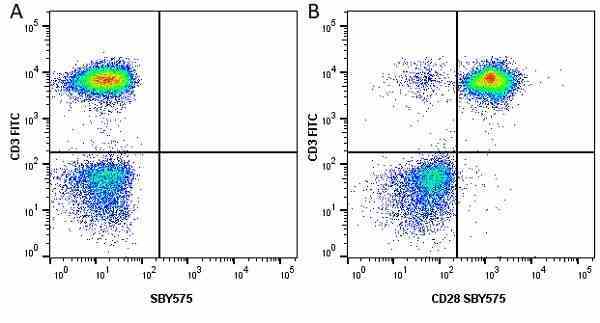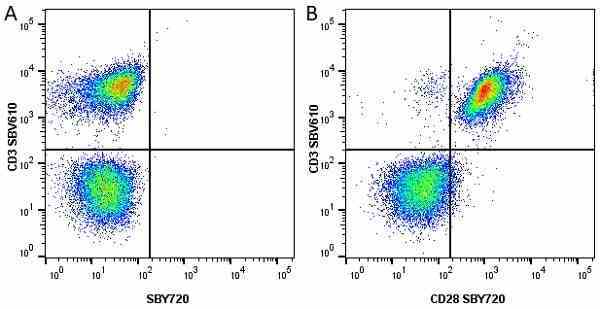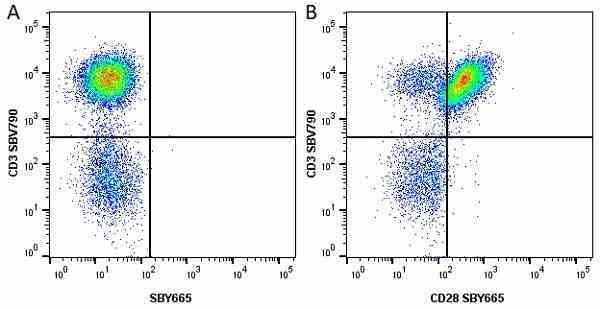CD28 antibody | YTH913.12

























Rat anti Human CD28
- Product Type
- Monoclonal Antibody
- Clone
- YTH913.12
- Isotype
- IgG2b
- Specificity
- CD28
| Rat anti Human CD28 antibody, clone YTH913.12 recognizes human CD28, a ~44 kDa single pass type 1 trans-membrane protein expressed as a homodimer on a major subset of human T-cells (Thompson et al. 1989), responsible for activation of these cells via interaction with the TCR. CD28 is involved in the tuning of the T-cell for activation via TCR, lowering the threshold for activation from around 8000 triggered TCRs to approximately 1500 (Viola et al.1996). CD28 along with CD152, also known as CTLA-4 acts as a co-receptor for the co-stimulatory molecules CD80 and CD86 (Azuma et al. 1993). CD28 offers a positive stimulatory role on ligation of CD80 and CD86 while CTLA-4 offers a negative feedback signal preventing CD28 mediated T-cell activation of CD86 (Krummel et al. 1995). Rat anti human CD28, clone YTH913.12 has been reported to recognize an epitope of CD28 expressed by NK cells, which is not recognized by other anti human CD28 clones such as 9.3 and CD28.2 (Galea-Lauri et al 1999.) Other reports however have failed to demonstrate CD28 staining on peripheral blood derived NK cells using clone YTH913.12 ( |
- Target Species
- Human
- Product Form
- Purified IgG - liquid
- Preparation
- Purified IgG prepared by affinity chromatography on Protein G from tissue culture supernatant
- Buffer Solution
- Phosphate buffered saline
- Preservative Stabilisers
0.09% Sodium Azide - Carrier Free
- Yes
- Immunogen
- Human peripheral blood T-cells.
- Approx. Protein Concentrations
- IgG concentration 1.0 mg/ml
- Fusion Partners
- Spleen cells from an immunized DA rat were fused with cells of the Y3/Ag 1.2.3 rat myeloma cell line.
- Regulatory
- For research purposes only
- Guarantee
- 12 months from date of despatch
Avoid repeated freezing and thawing as this may denature the antibody. Storage in frost-free freezers is not recommended.
| Application Name | Verified | Min Dilution | Max Dilution |
|---|---|---|---|
| Flow Cytometry | 1/25 | 1/50 | |
| Immunohistology - Frozen |
- Flow Cytometry
- Use 10ul of the suggested working dilution to label 106 cells or 100ul whole blood.
| Description | Product Code | Applications | Pack Size | List Price | Your Price | Quantity | |
|---|---|---|---|---|---|---|---|
| Rat IgG2b Negative Control | MCA6006GA | F | 0.1 mg |
|
Log in | ||
| List Price | Your Price | ||||||
|
|
Log in | ||||||
| Description | Rat IgG2b Negative Control | ||||||
References for CD28 antibody
-
Reiter, C. (1989) Cluster Report: CD28 in Leucocyte Typing IV: White Cell Differentiation Antigens. Edited by Knapp, W., Dorken, B., Gilks, W.R., Rieber, E.P., Schmidt, R.E., Stein, H. and von dem Borne, A.E.G.Kr.
Oxford University Press. pp 352-3. -
McLeod, J.D. et al. (1998) Activation of human T cells with superantigen (staphylococcal enterotoxin B) and CD28 confers resistance to apoptosis via CD95.
J Immunol. 160: 2072-9. -
Galea-Lauri, J. et al. (1999) Expression of a variant of CD28 on a subpopulation of human NK cells: implications for B7-mediated stimulation of NK cells.
J Immunol. 163 (1): 62-70. -
Wilson, J.L. et al. (1999) NK cell triggering by the human costimulatory molecules CD80 and CD86.
J Immunol. 163: 4207-12. -
Costa, C. et al. (2002) Human NK cell-mediated cytotoxicity triggered by CD86 and Gal alpha 1,3-Gal is inhibited in genetically modified porcine cells.
J Immunol. 168: 3808-16. -
Ponchel, F. et al. (2002) Dysregulated lymphocyte proliferation and differentiation in patients with rheumatoid arthritis.
Blood. 100: 4550-6. -
Blanco, B. et al. (2003) Induction of human T lymphocyte cytotoxicity and inhibition of tumor growth by tumor-specific diabody-based molecules secreted from gene-modified bystander cells.
J Immunol. 171: 1070-7. -
Johnston, A. et al. (2004) Peripheral blood T cell responses to keratin peptides that share sequences with streptococcal M proteins are largely restricted to skin-homing CD8(+) T cells.
Clin Exp Immunol. 138 (1): 83-93.
View The Latest Product References
-
Goodier, M.R. and Londei, M. (2004) CD28 is not directly involved in the response of human CD3- CD56+ natural killer cells to lipopolysaccharide: a role for T cells.
Immunology. 111: 384-90. -
Kropf, P. et al. (2007) Arginase activity mediates reversible T cell hyporesponsiveness in human pregnancy.
Eur J Immunol. 37: 935-45. -
Gabdoulkhakova, A. et al. (2007) High rate of mutation reporter gene inactivation during human T cell proliferation.
Immunogenetics. 59: 135-43. -
Pridgeon, C. et al. (2011) Regulation of IL-17 in chronic inflammation in the human lung.
Clin Sci (Lond). 120: 515-24. -
Litjens, N.H. et al. (2011) Identification of Circulating Human Antigen-Reactive CD4+FOXP3+ Natural Regulatory T Cells.
J Immunol. 188: 1083-90. -
Svensson-Arvelund, J. et al. (2015) The human fetal placenta promotes tolerance against the semiallogeneic fetus by inducing regulatory T cells and homeostatic M2 macrophages.
J Immunol. 194 (4): 1534-44. -
Hasib, L. et al. (2016) Functional and homeostatic defects of regulatory T cells in patients with coronary artery disease.
J Intern Med. 279 (1): 63-77. -
Siska, E.K. et al. (2017) Generation of an immortalized mesenchymal stem cell line producing a secreted biosensor protein for glucose monitoring.
PLoS One. 12 (9): e0185498. -
Hellberg, S. et al. (2021) Progesterone Dampens Immune Responses in In Vitro Activated CD4+ T Cells and Affects Genes Associated With Autoimmune Diseases That Improve During Pregnancy.
Front Immunol. 12: 672168. -
Zenere, A. et al. (2023) Prominent epigenetic and transcriptomic changes in CD4(+) and CD8(+) T cells during and after pregnancy in women with multiple sclerosis and controls.
J Neuroinflammation. 20 (1): 98.
Please Note: All Products are "FOR RESEARCH PURPOSES ONLY"
View all Anti-Human ProductsAlways be the first to know.
When we launch new products and resources to help you achieve more in the lab.
Yes, sign me up